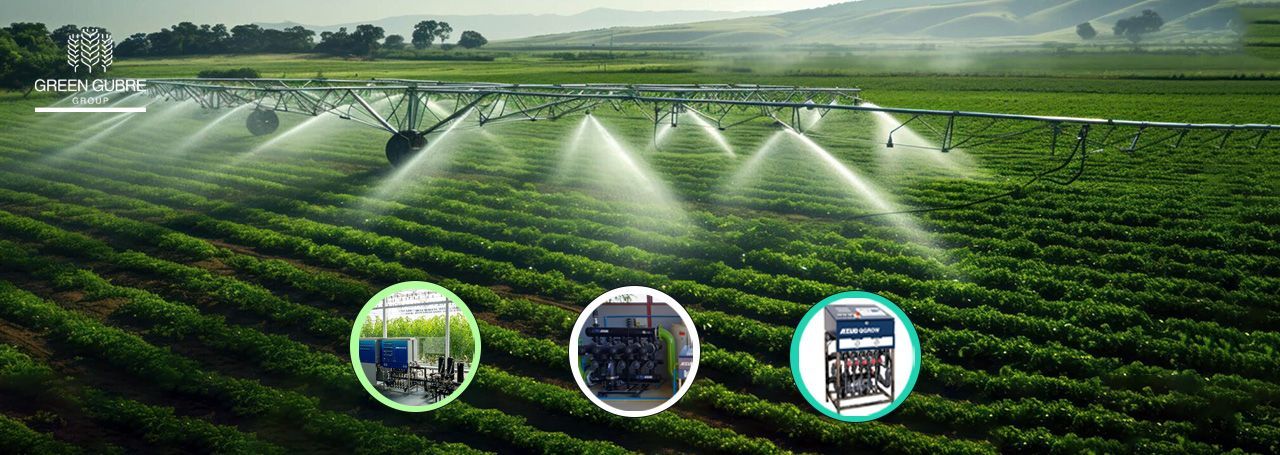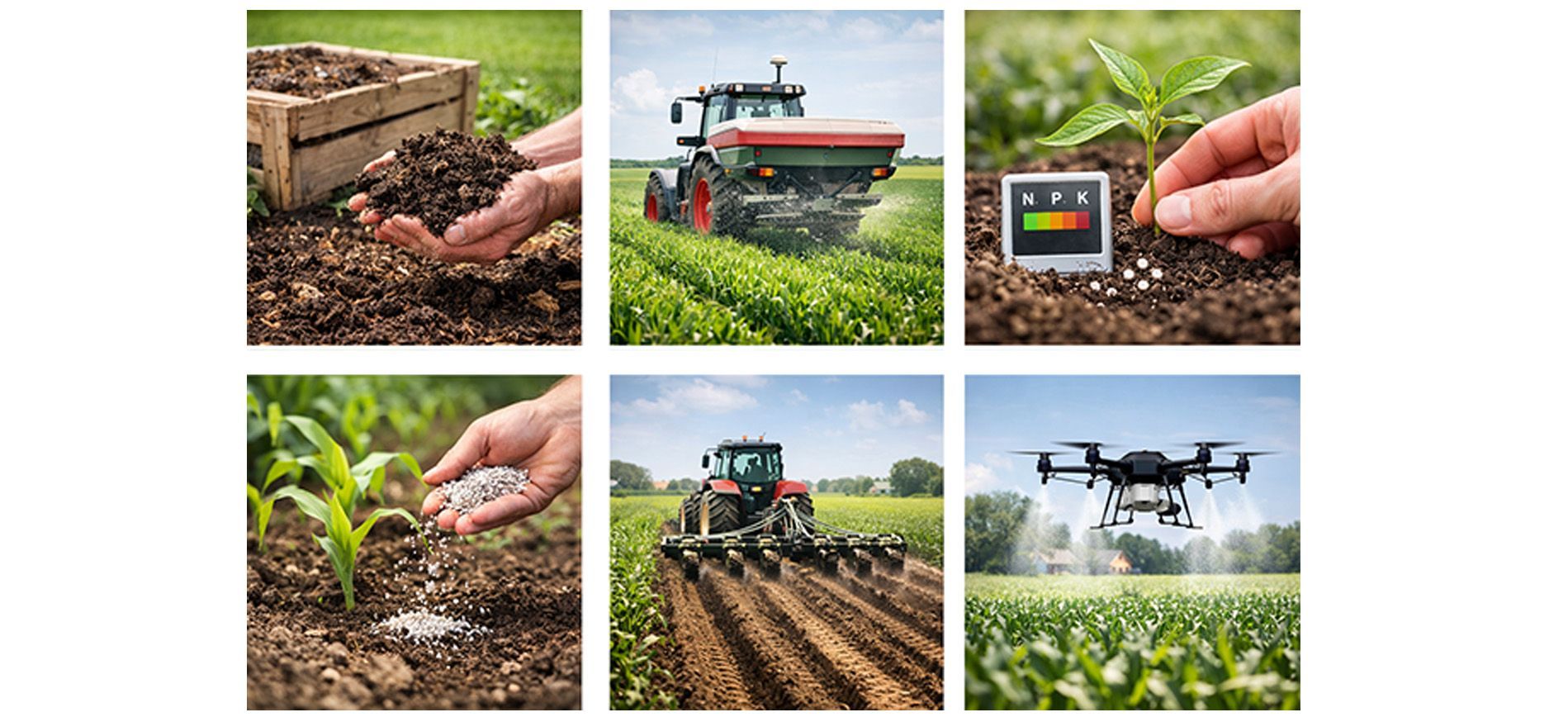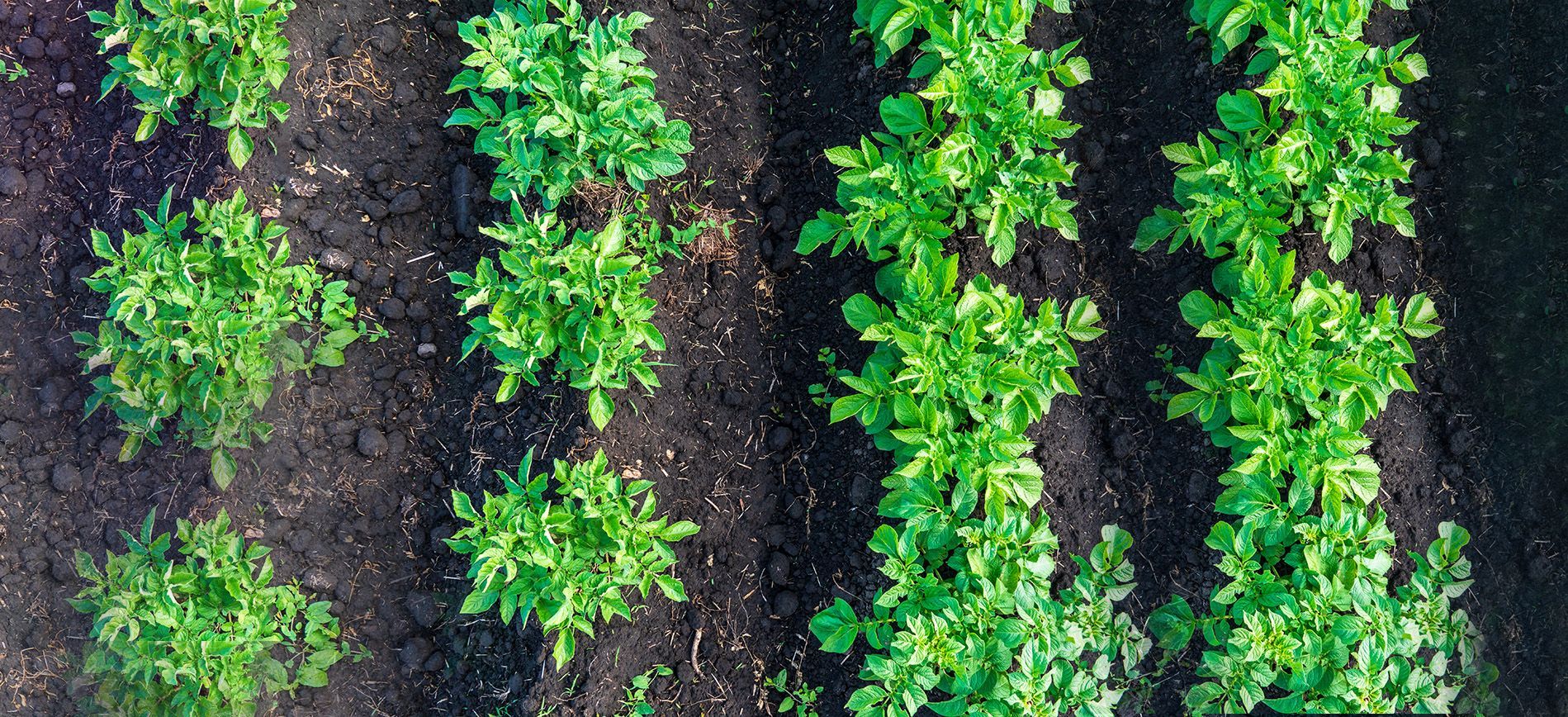Fertigation – Integrating Irrigation and Nutrition for Maximum Efficiency
Fertigation – Integrating Irrigation and Nutrition for Maximum Efficiency

Introduction: Two Essentials, One System
Fertigation—the process of applying fertilizers through irrigation systems—has become a cornerstone of precision agriculture, especially in high-efficiency cropping systems. By delivering nutrients directly to the root zone via drip or sprinkler irrigation, fertigation allows farmers to synchronize nutrient supply with water delivery. The result? Improved nutrient uptake, reduced input waste, and higher yields with a lower environmental impact.
1. How Fertigation Works
Fertigation systems use injectors or dosing pumps to mix soluble fertilizers into irrigation water, which is then distributed through:
- Drip lines (ideal for row crops, orchards, and greenhouses)
- Micro-sprinklers (used in orchards and nurseries)
- Pivot or sprinkler systems (used in large-scale cereals or vegetables)
Common nutrients used in fertigation:
- Nitrogen: urea, calcium ammonium nitrate
- Phosphorus: monoammonium phosphate (MAP)
- Potassium: potassium nitrate or sulfate
- Micronutrients: chelated Fe, Zn, Mn, B
2. Benefits of Fertigation
- Precision Delivery: Nutrients reach the exact root zone, reducing losses to leaching or runoff
- Improved Yields: Timely and stage-specific application increases plant productivity
- Water Savings: Fertigation integrates well with drip irrigation, optimizing water use
- Reduced Labor: Fewer field passes and efficient use of resources
- Flexibility: Nutrient composition can be adjusted weekly based on crop demand
Case studies from India and Israel demonstrate yield gains of 20–40% in crops such as tomatoes, citrus, and bananas under fertigation compared to traditional methods.
3. Crops and Regions That Benefit Most
Fertigation is well-suited for:
- Vegetables (tomato, cucumber, onion): For precision nutrient delivery
- Orchards (citrus, apple, olive): To support long growing seasons and reduce salinity buildup
- Greenhouse Crops: Essential for hydroponic and semi-hydroponic systems
- Sugarcane and Cotton: In water-scarce regions of India and Brazil
Countries with major fertigation programs:
- India: ‘Per Drop More Crop’ promotes fertigation in micro-irrigated fields
- Israel: Global leader in fertigation R&D and implementation
- Spain: Olive and citrus growers widely adopt fertigation to manage salinity and drought
4. Infrastructure and Challenges
To implement fertigation successfully, farmers need:
- Quality irrigation systems (drip/micro-sprinklers)
- Filtration units to avoid clogging
- Injection equipment (venturi, piston pumps)
- Water-soluble or liquid fertilizers
Challenges include:
- Initial investment in hardware
- Water quality issues (e.g., salinity or pH)
- Training on compatibility, mixing, and scheduling
- Risk of uneven nutrient distribution if pressure or flow is inconsistent
5. Green Gubre Group – Complete Fertigation Solutions
At Green Gubre Group, we support fertigation from start to harvest with:
- Custom water-soluble NPKs and micronutrients
- Injection-ready liquid fertilizer solutions
- Agronomic advice and fertigation planning
- Equipment guidance for smallholder and commercial farms
We help you turn water into a vector of productivity—delivering nutrients exactly where and when your crops need them.
References
🔗 FAO – Fertigation: Efficient Use of Water and Fertilizers
🔗 https://ucanr.edu/site/solution-center-nutrient-management/focus-topics




